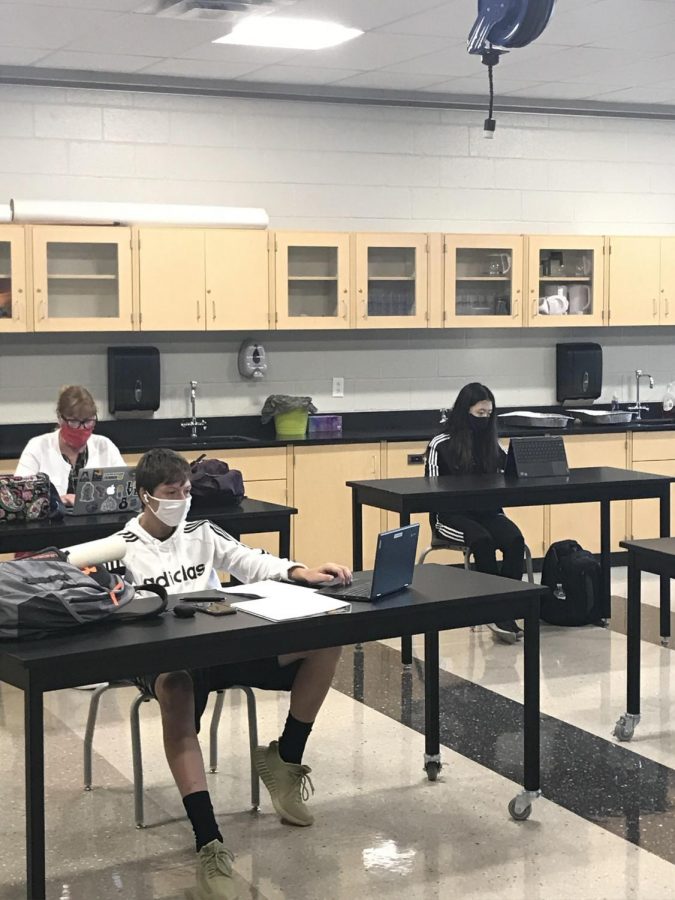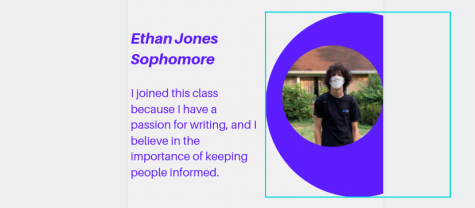Starting High School Off Right: How the Freshman Class Adapted to a Pandemic
Freshman students work hard in their study hall on Monday, August 31st in State College, PA. Ninth graders have to deal with the normal stress of their first year of high school, as well as the new changes brought on by COVID procedures.
September 4, 2020
The transition to partially remote learning brought on by the COVID-19 pandemic has been a tough adjustment for teachers and students alike. However, one group in particular is being hit harder than the rest: This year’s freshman class. Freshman year of high school is already challenging to begin with: students must find a balance between social life and a new, more intense workload, and find time for any extracurricular activities they may be involved in. Now with the newly acclimated system of remote learning, the freshman experience as we’ve all come to know has been altered more than ever.
“As someone who is currently going to school every other day, I feel like the new altered schedule is negatively affecting my freshman experience,” freshman Carsten Briscoe said. “I can’t interact with friends very much, and when I am at home, interacting with a class becomes more difficult and I feel disconnected.” When asked about how he felt his peers were taking the transition, he answered, “I’ve perceived a pretty negative reaction.”
Briscoe isn’t the only freshman feeling frustrated with the current situation. “Not being in the building every day definitely impacts a lot,” fellow freshman Colin Dardis said. “The less time I spend in the building makes it harder for me to find my way around the school.”
Dardis also finds himself working more productively on in-person days. “I definitely work better in the building, walking in between classes keeps me energized.” However, when asked if he would go back full time given the opportunity, Dardis said no, at least not right now. “If the school went back to full time in person, the risk of spreading cases would be too high. I wouldn’t feel safe.”
Briscoe, on the other hand, said he would take the opportunity to go back full time. “I work better when I am in school,” Briscoe said. “I am more focused and am able to interact with my peers and my teachers with greater ease.”
While the student perspective on this new schedule is mixed, one teacher’s view suggests that both the staff and the students have adapted well. “I haven’t noticed a major change in freshman attitude this year,” freshman English teacher Jared McConkey said. “I think there’s always so many unknowns at the start of 9th grade that for the most part, incoming freshmen are just trying to stay on top of things.”
“I think that it’s really hard to know what the impact of this year will be,” McConkey said, “but I do know that there are students who accomplish more in a remote model and there are students who accomplish more in a physical environment.”
As the number of COVID cases changes and the year continues, a more definite answer to the doubts and questions of State High students and staff is bound to surface. “I’m thankful that we have a district that developed such a comprehensive safety plan so that we can provide what is best for our students while keeping health and safety a paramount.” McConkey said. Hopefully, that can continue to be the case.



